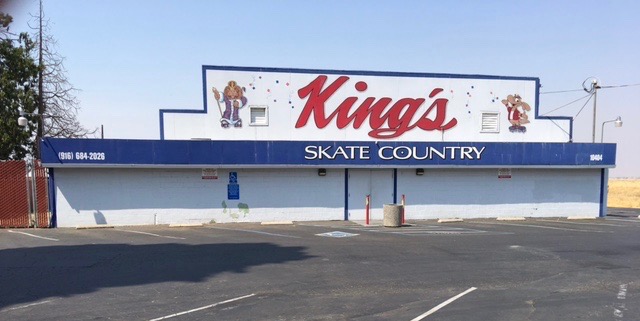Formally known as Georgetown
Written by Dennis Buscher in January 2020

Sacramento County was divided into 13 Townships, Franklin being one of them, which was established on October 20, 1856 by the order of the Board of Supervisors. (Note the town of Georgetown in green area)
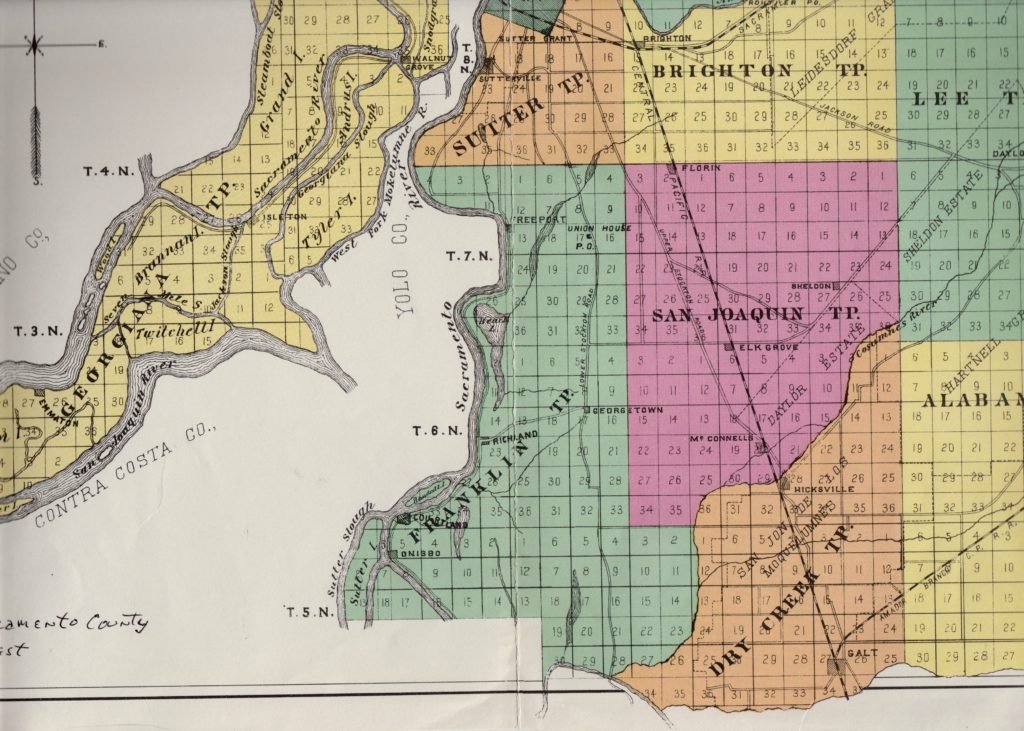
The land was all agricultural or marsh land. Because of the available water, early pioneers settled along the Sacramento River. Those settlers included Joseph Sims (1849), J. B. Green (1849), J. C Beach (1850), Wm . Fry (1852), Joseph Green (1851), Truman Farsett (1852), George W. Hack (1855), R. Kercheval (1850), David Lufkin (1850), Jacob Miller (1853), John Reith (1855)Solomon Runyon (1850), Myron Smith (1853) and Adam Warner (1853). Because of flooding of the Sacramento River, many of the early farmers had to move their residences further to the east from the river than where originally established.
Title to the land was derived from the United States Government, there being no Spanish or Mexican grants in the township. There were large quantities of wheat raised, and along the river orchards of apples, pears, peaches, plums, cherries and all sorts of small fruits.
Two miles north of the location of what now is the town of Franklin, the first structure was the 12 mile house that was built about 1850 buy Mr. McHesser on the lower Stockton road which is now known as Franklin Boulevard.
In 1856, Andrew George opened a hotel 14 miles south of Sacramento and named it Franklin House. It was the first building in what became known as Georgetown. That building was torn down in 1879 and replaced by a two story hotel and a two story brick tavern with a social hall upstairs.
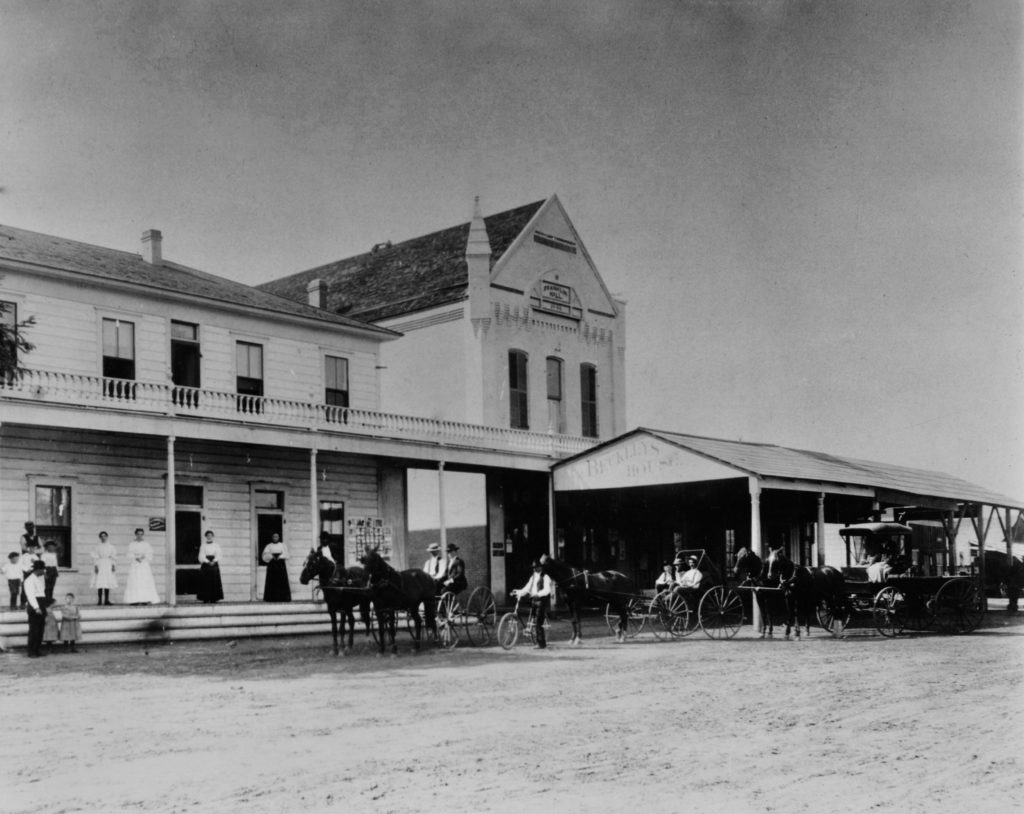
Andrew George (1821-1869) was born in Franklin County, Indiana and married to Mary E. Johnson (1824-1886) and they raised 8 children in Georgetown. The post office (1856-1943) was at Franklin House and called Franklin. The name of Georgetown was changed to Franklin about 1886 because there was already a Franklin town in the foot hills. The hotel and tavern were later owned and operated by Piram Beckley until his death in 1902 and then by Frank Meinard Kunsting until his death in 1918.


The hotel was then closed and used as a private residence and the tavern was then operated by Archie Gilliam. Frank M. Kunsting removed the upper story of the tavern because it had become unstable and constructed a two story building next door with the upper story used as a social hall. The hotel was torn down about 1963.
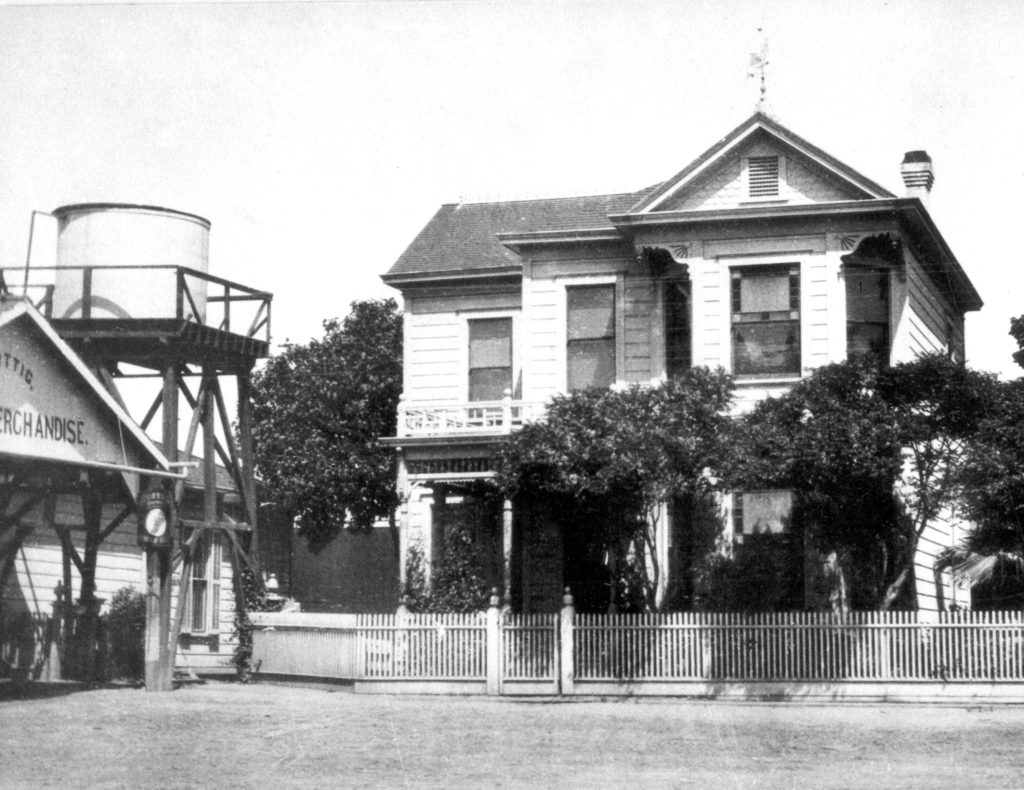
In 1855, a two story building called the Franklin School House was erected near Georgetown. The lower story was used for school and church purposes, while the upper story was for a “lyceum”, or secondary school.
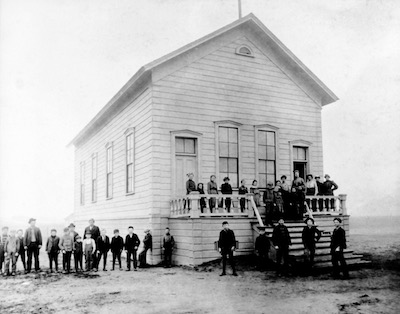
In 1876, the one room Franklin School building was erected at the corner of Franklin Blvd and Hood-Franklin Road, with an average attendance in 1880 of 45 pupils. That building was replaced in the 1910 by a stucco 2 room school building which was added onto in 1922 to create 4 classrooms. When the fruit sheds along the railroad were torn down, school Principle Peter Kramer had the WPA build a large gymnasium at the school. In 1956 a new 5 room school building was built west of the Cemetery to be used by the grades 5 thru 8 plus a classroom for the special education students. Both of the buildings on Franklin Blvd were torn down about 1968 and portable classrooms added to the school site west of the cemetery. The Franklin Cemetery eventually took over the land of the 1876 school and expanded the cemetery onto the land.
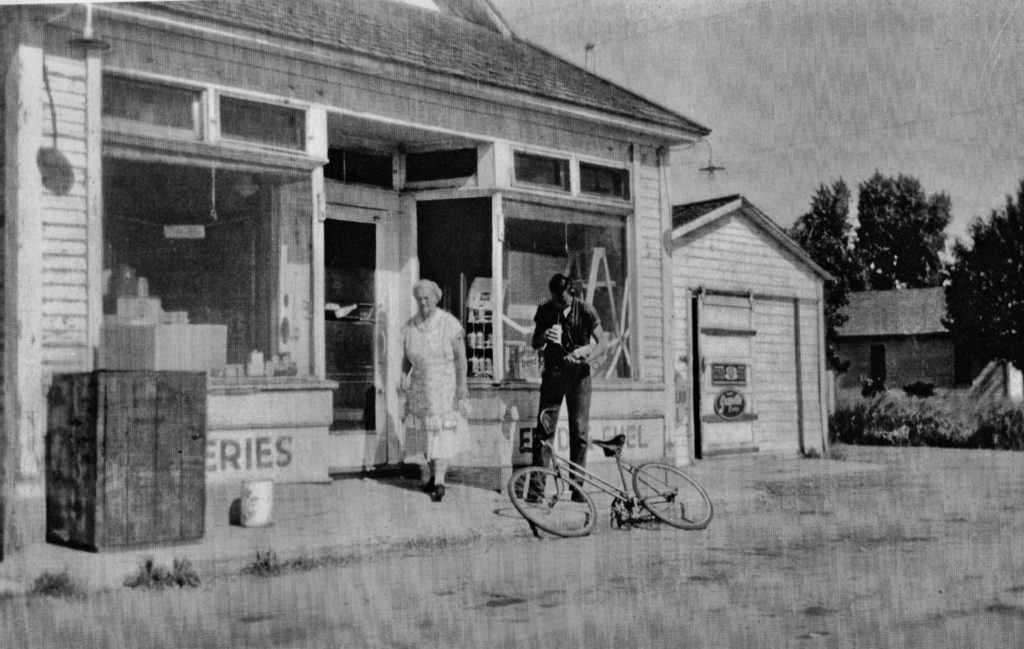
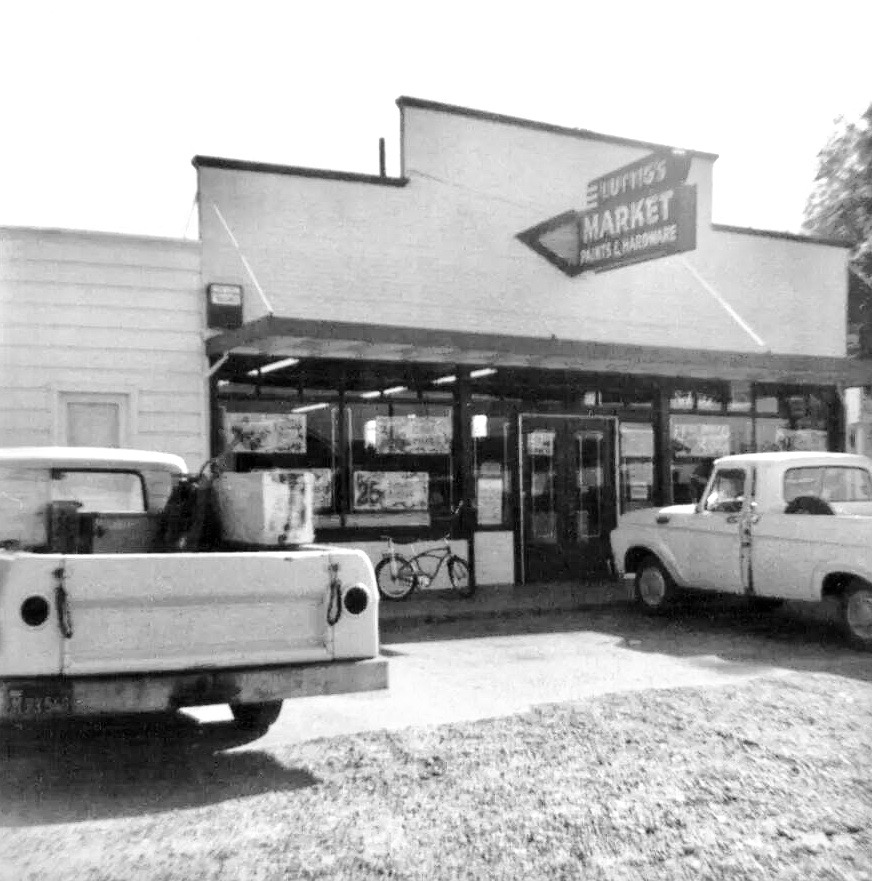
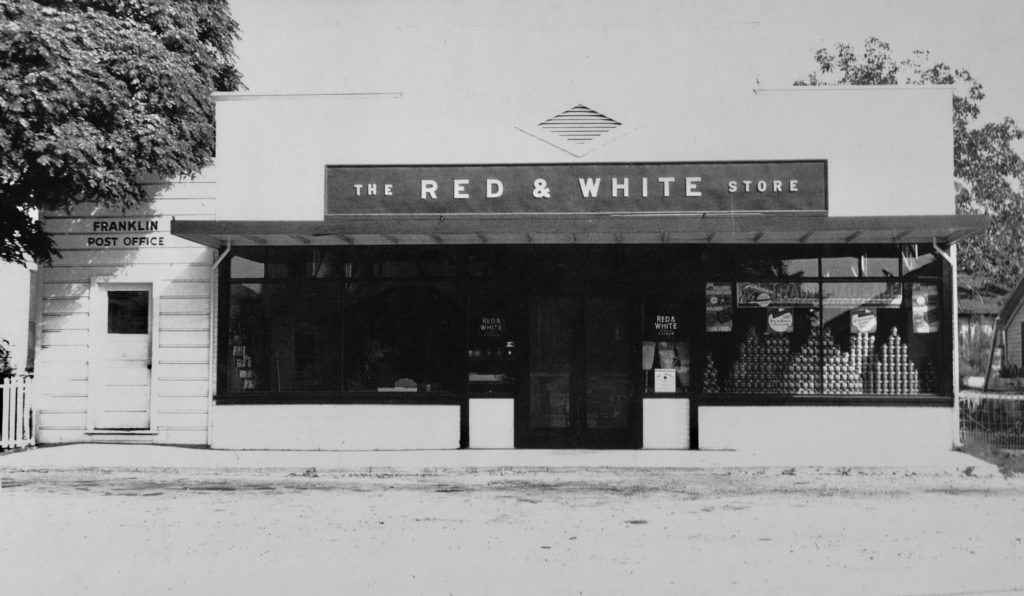
A general merchandise store was operated across the street from the Franklin Hotel and Tavern. In 1882 Frank Luttig bought the business and moved from Sacramento to Franklin with his young child (Henry) and his niece, Bernardine Hoffknecht. When Frank Luttig died in 1889, Frank Kunsting purchased the business. After his death in 1903, Henry Luttig and Frank’s nephew Frank Meinard Kunsting operated the business until Mr. Kunsting moved across the street to operate the Franklin Hotel and Tavern. Frank Kunsting married Bernardine Hoffknecht and they build a two story Victorian home on the south side of the store in about 1895. That home was later moved to Bilby road and restored by Dennis Buscher.
In the 1916 Henry Luttig built an auto dealership building on the south side of the two-story Victorian and sold and serviced automobiles. That business was closed in the 1930’s and the general merchandise business was moved into the dealership building. When Henry Luttig died in 1936, the business was operated by his widow Nellie Frey Kunsting Luttig until their son, Henry Luttig Jr. returned home from the Navy in 1943. In September 1943 business was then operated as a partnership by Henry Luttig Jr. and Henry Buscher. In 1951, Henry Luttig took over the business as a sole proprietorship.
At the southwest end of town was a popular saloon from the 1880’s. Archie Gilliam operated the business in this building before moving into the Franklin hotel and tavern.
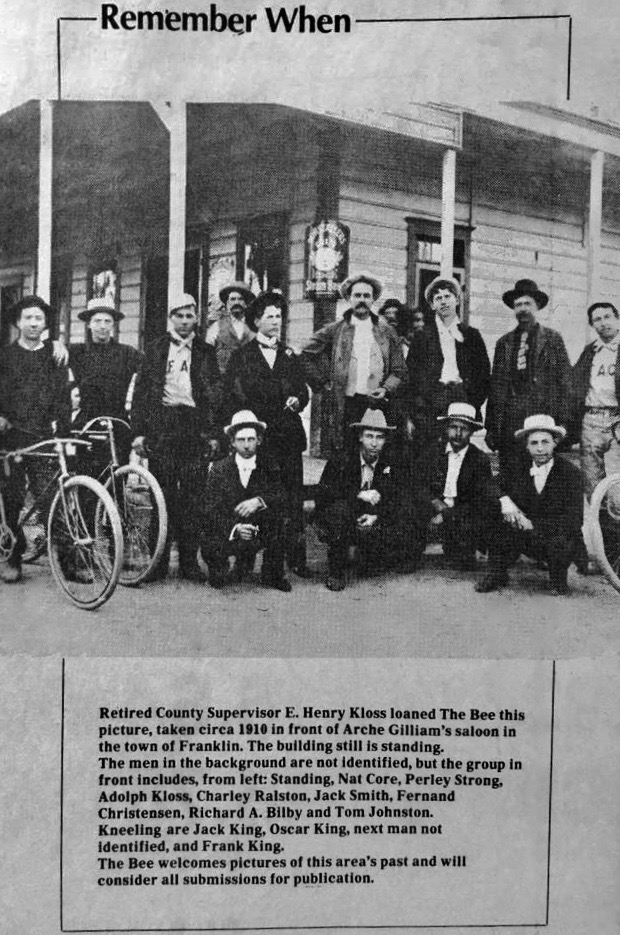
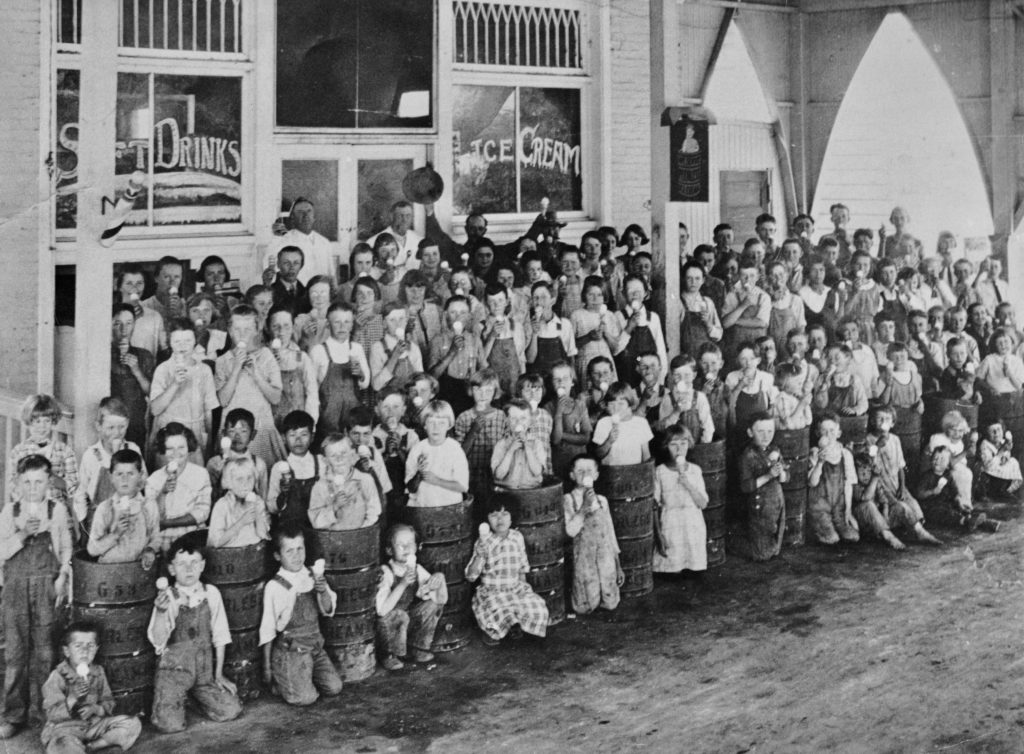
The building and business was then taken over by Otto and Stella Hansen as Otto’s place until the 1990’s. In the early 1900’s on the west side of the street, there was a lumber yard, and a meat store that was operated by Christopher Schulz.
In the late 1800’s on the east side of the street was a blacksmith shop that was operated by Herman Schoech and later by Henry Aldinger.
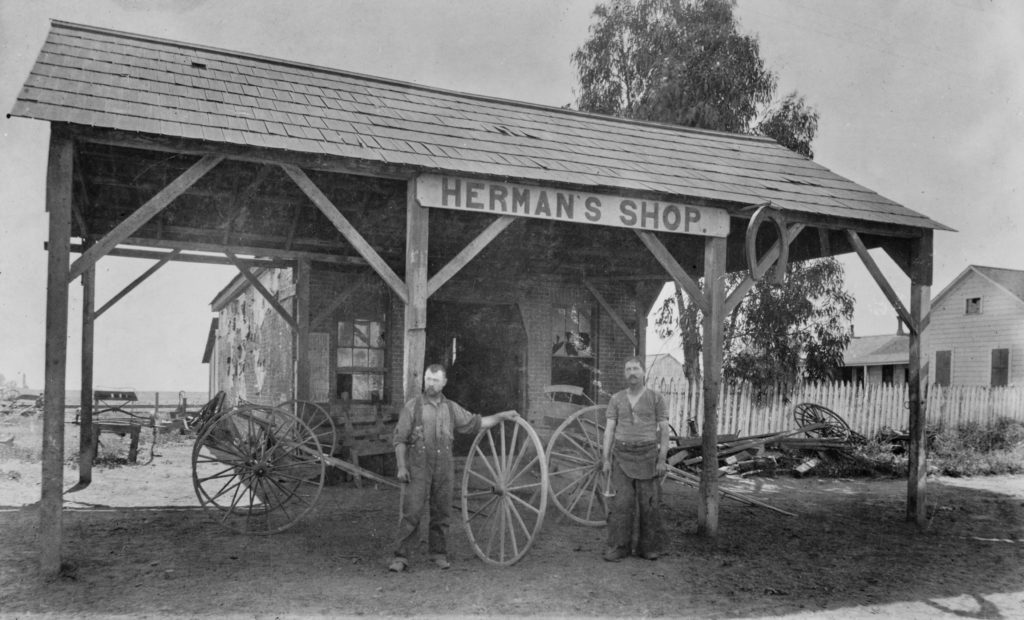
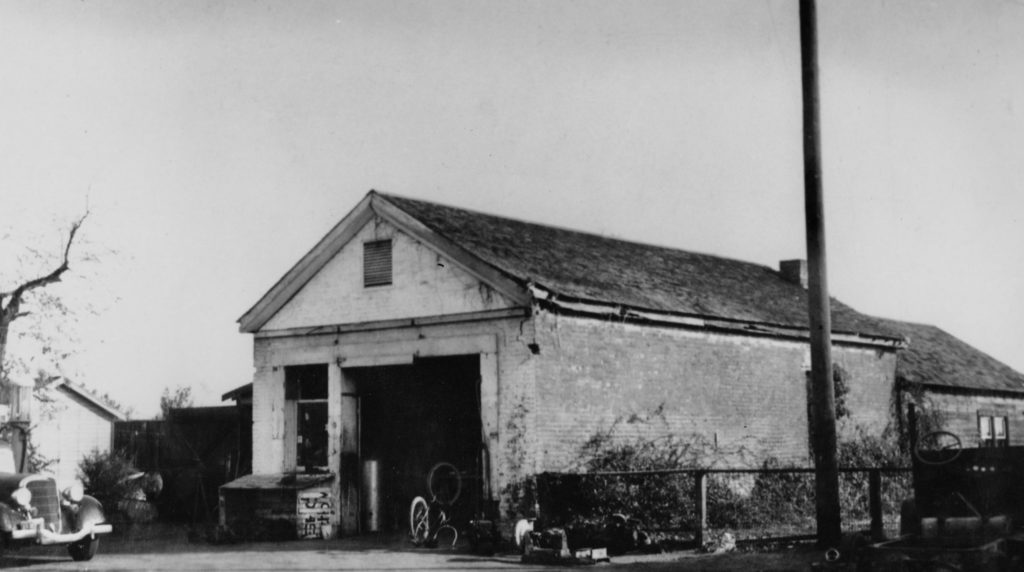
Herman’s brother, Charles Schoech was the town constable. In the 1930’s there was a shell gasoline station on the corner of Franklin Blvd and Bilby Road by Jack and Maggie Smith.
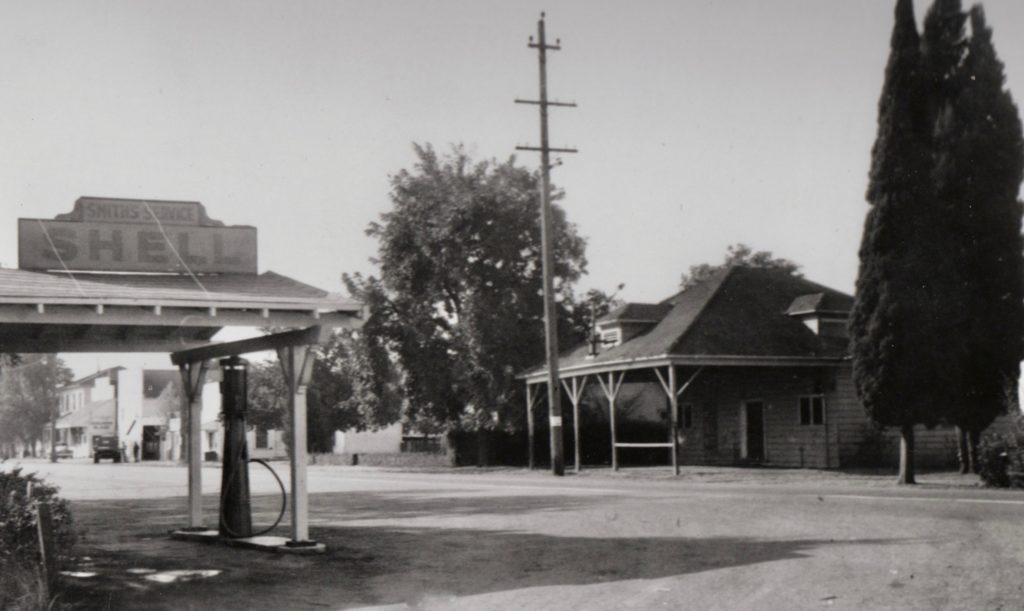
It was closed by the 1950’s and a gasoline station and auto repair shop was opened just south in what was the blacksmith building. This business was operated by George and Peggy Fleming. In 1948, Lester and Velma King opened up King’s Skating Rink at the south end of town.
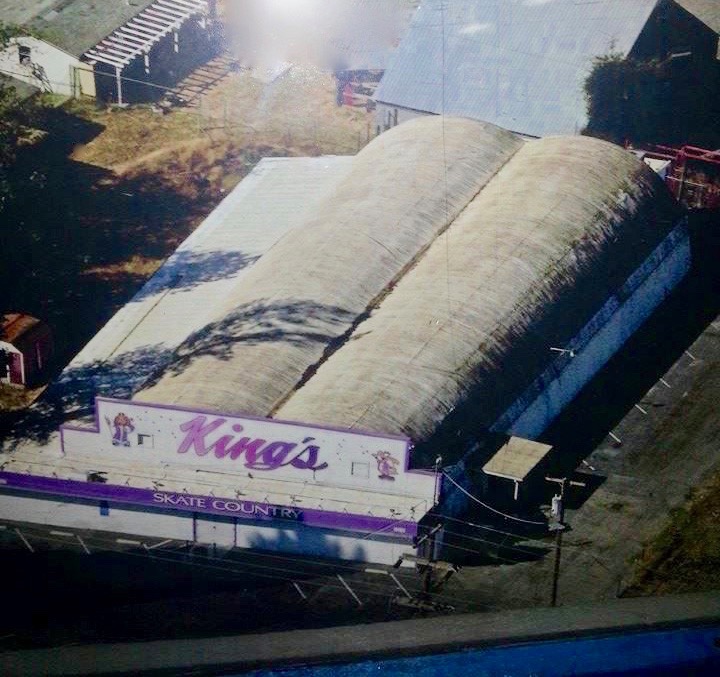
That became a very popular attraction for all of the Elk Grove area and is still operated in 2020 by third generation family members. The building is unique in that it is two large Kwanza huts that were put together to form one large building.

In the 1920’s, the Russian German immigrants built German Zion Baptist Church on the corner of Franklin Blvd and Hood-Franklin Road. Services were spoken is German until the 1940’s. When the congregation outgrew the building, they moved to Elk Grove in the late 1940’s. That congregation is now on highway 99 as Creekside Church.
In 1910, the Western Pacific Railroad constructed its transcontinental railroad line through Franklin and the first trains rolled through in August, 1910.

The Railroad Depot was located at the crossing on Bilby Road which was a daily stop for passengers and mail from San Francisco and from Sacramento. The depot was closed about 1940 and destroyed by fire in the mid 1940’s.The town has remained much the same as it was in the 1940’s because of the lack of infrastructure for water and sewer. Commercial buildings cannot be built without this infrastructure
(Note: For more information on the railroad line through Franklin, peruse “Railroads ” under HISTORY TOPICS.)
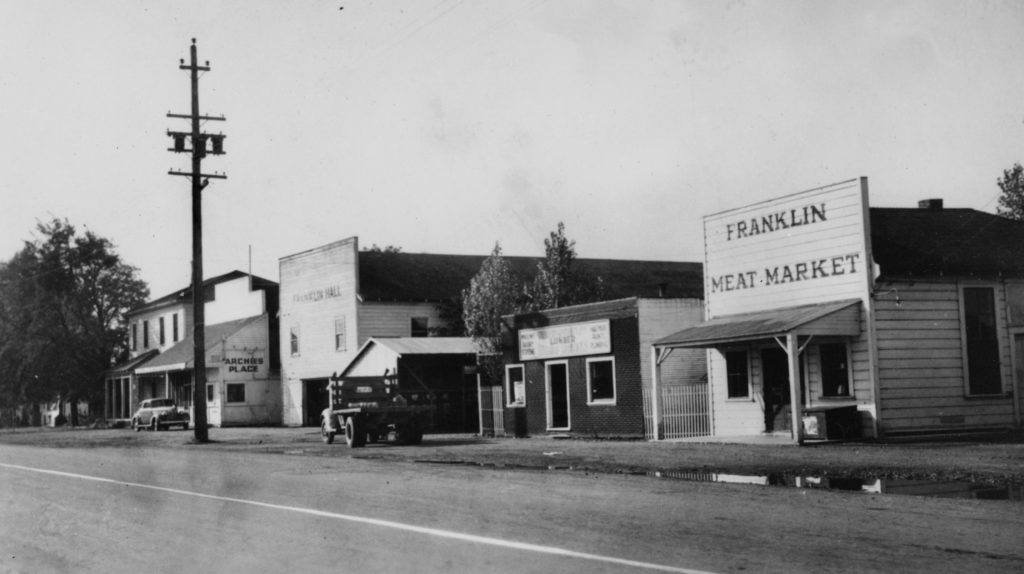
Present Day Franklin:








